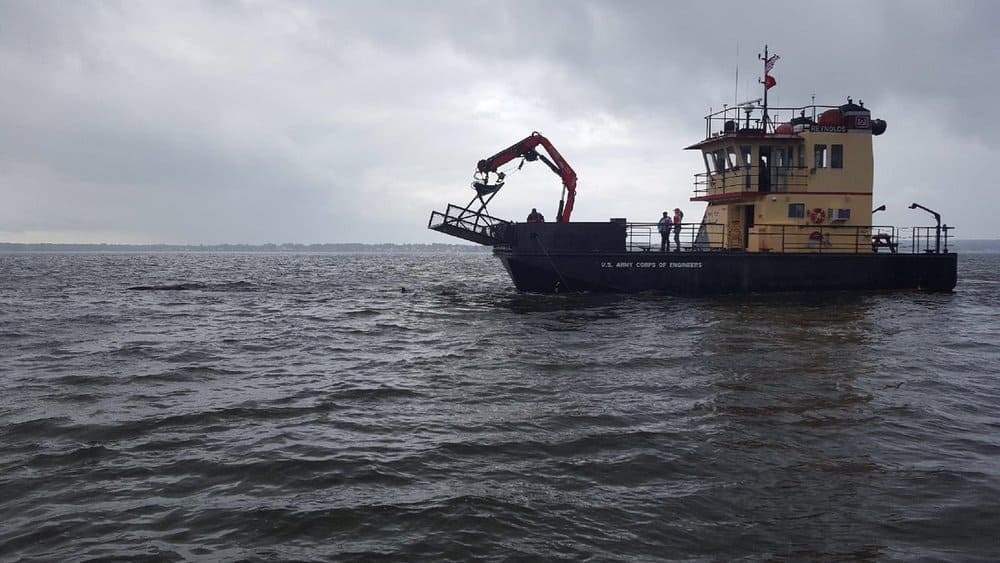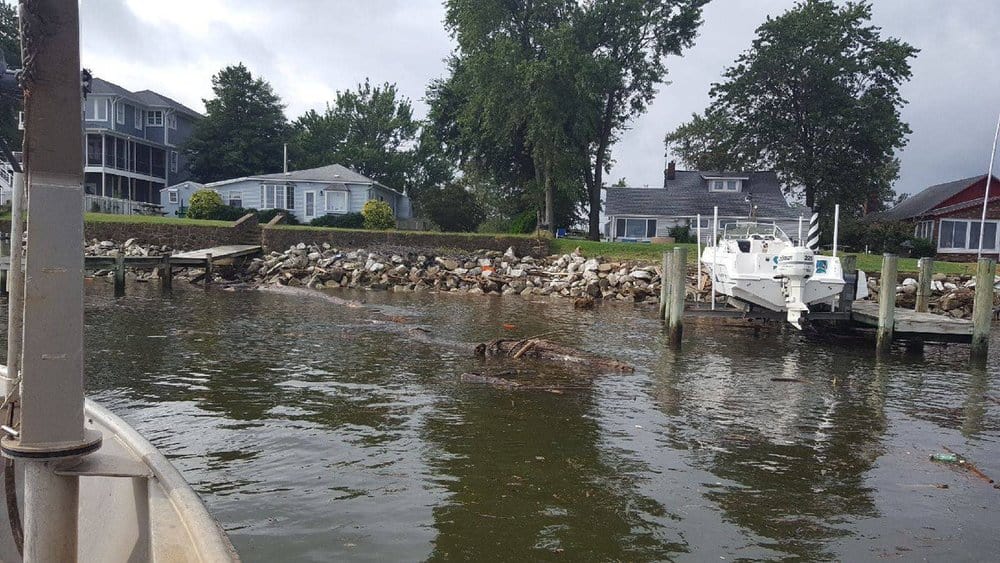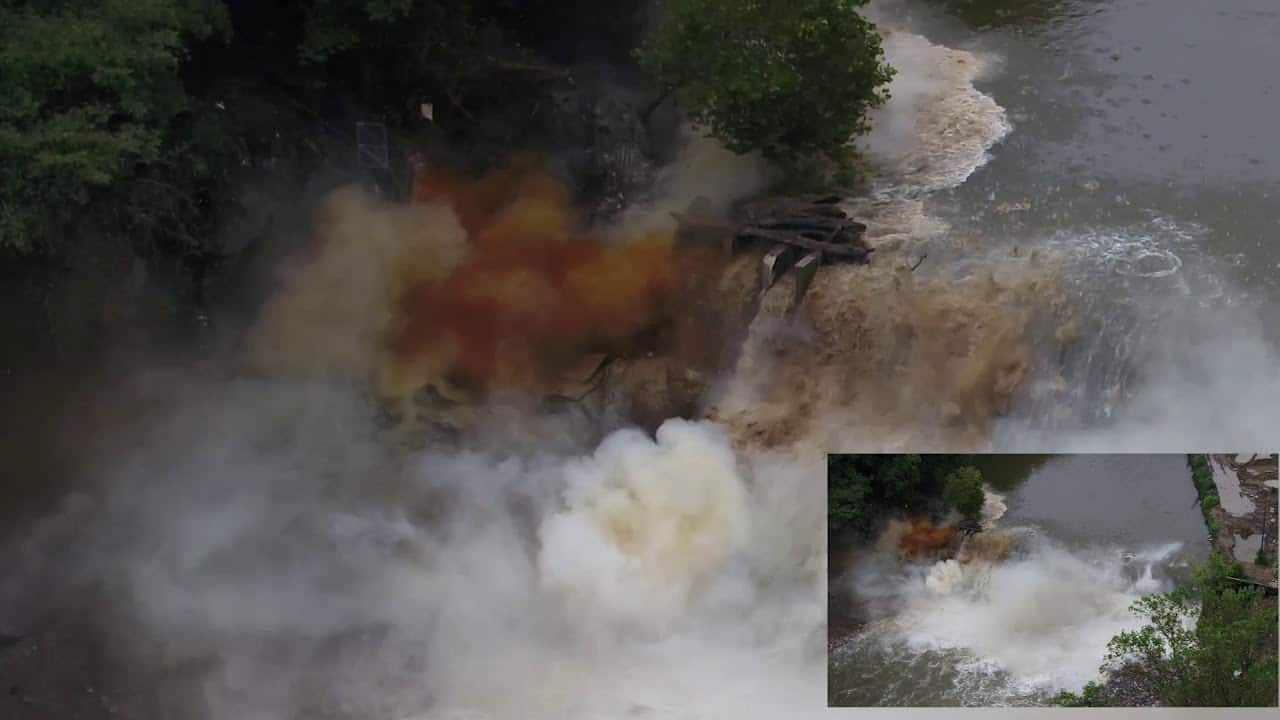When Hurricane Florence made landfall, sending dangerous floodwaters over the Carolinas, the Chesapeake Bay region got very lucky. But the effects Florence caused on the Bay are adding to an ongoing problem: too much rainfall and debris in the water.
An 80-foot tree was found floating in the Patapsco River.It started with the back-to-back rainstorms in July that caused historic water flow at the Conowingo Dam. Hazardous debris went washing down the Bay, and environmentalists feared the worst about how much nutrient pollution probably came with it.
Now, even more rain has sent even more debris down to shorelines from Baltimore to Annapolis. Over the weekend, Fort Smallwood Park in Anne Arundel County was forced to close its swimming beaches because of large debris deposits.

And on Tuesday, the Maryland Department of Natural Resources’ Hydrographic Operations team had to call in help to remove an 80-foot tree that was floating in the Patapsco River near Baltimore. The U.S. Army Corps of Engineers brought the Reynolds, a steel debris-removal boat with a hydraulic front-end loader, to help move it.
Since the big storms in July, scientists have been monitoring the impact of all that rain on the Bay’s health. Ahead of Hurricane Florence, scientists from the U.S. Geological Survey and other agencies stepped up their monitoring efforts to see how this storm’s rainfall might affect the Bay. Researchers took samples at 24 sites from the Chesapeake Bay Program’s water quality network in Virginia, both last week and this week. But scientists say it may be months before they can determine the full impact of this memorably wet month.
-Meg Walburn Viviano




